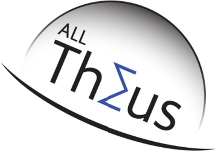
At the smallest scales of distance and duration that we can measure, space-time – that is, the three directions of space plus time – appears to be smooth and structureless. (Space-time is also very stiff – implying an enormous amount of energy is needed to ripple it – it was estimated that the energy equivalent of about 3 solar masses produced gravity waves detected by advanced LIGO and announced in Feb 2016).
However, certain aspects of quantum mechanics predict that space-time would not be smooth.
Rather, it would have a foamy, jittery nature and would consist of many small, ever-changing regions for which space and time are no longer fixed, but instead fluctuate.
“One way to think of space-time ‘foam’ is how, when you are flying over the ocean in an airplane, the water looks completely smooth. Yet if you get low enough, you see there are waves, and closer still, foam, with tiny bubbles that are constantly fluctuating,” said lead author Eric Perlman, an associate professor in the Physics and Space Sciences Department at Florida Tech in Melbourne.
“Space-time foam would be like the rough and foamy nature of the ocean, with bubbles so tiny that even on atomic scales it’s like trying to observe it from a very high-flying airplane.”
However foamy space-time limits the accuracy with which distances can be measured because the size of the many quantum bubbles through which light travels will fluctuate.
Research (here) published in the May 20, 2015 edition of The Astrophysical Journal by associate professor Eric Pearlman, Professor Saul Rappaport, MIT, Drs Wayne Christiansen, Y. Jack Ng of the University of North Carolina, John DeVore of Visidyne, Inc., and David Pooley of Sam Houston State University in Texas (now Asst Professor at Trinity University) show that space-time is smooth down to distances 1000 times smaller than the nucleus of a hydrogen atom. The research has allowed some models of space-time “foam” to be eliminated. This improves our understanding of space-time’s structure and how gravity might be unified with quantum mechanics.
Two very accessible discussion of this can be found on
(a) Stuart Gary’s Starstuff of 3 Jun 2015 about 16 minutes into the podcast.
And

